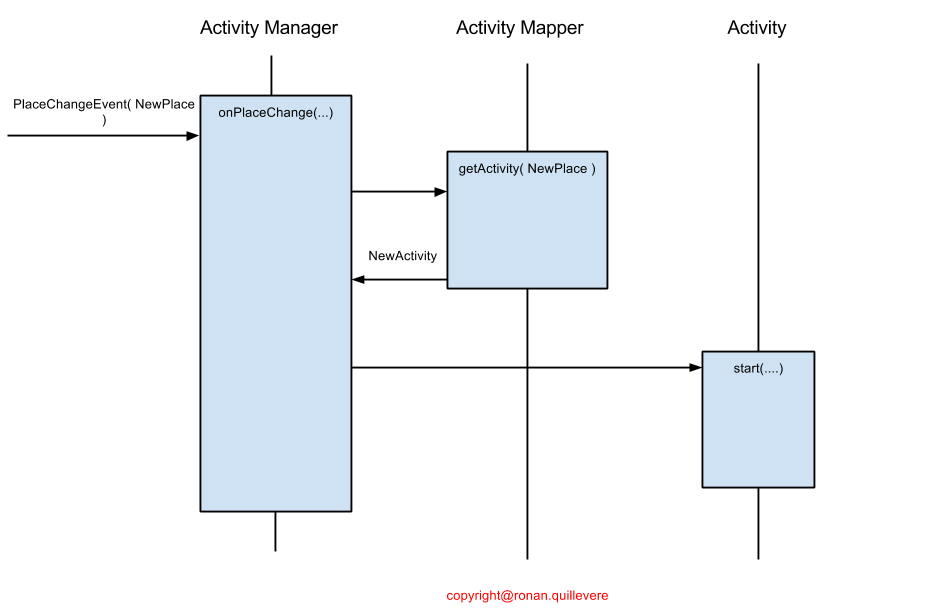Activities are objects in charge of the interactions on a given part of the UI, in a given time. They are started/stopped by their relative ActivityManagers in response of URL changes (i.e., PlaceChangeEvents).
An ActivityManager is in charge of a given area of the UI, a display (of course, if you have multiple managers; the whole UI - the body - in the other case). Such managers internally hold a reference to the AcceptsOneWidget they own (the one you pass from a call to ActivityManager.setDisplay() method), as well as an EventBus object (the one you pass from an ActivityManager instantiation).
So...
containerWidgetis the display. It could be aRootLayoutPanel.get(), or a specific panel of the whole UI (must be anAcceptsOneWidgetone). You attach your view, to it.- The
EventBusof thestart()method is aResettableEventBuswrapper of the original one holded by theActivityManager. This way, when the activity is stopped, any handler attached to such bus, will be automatically de-registered. You generally want to rely on this bus, rather than using the global one.
